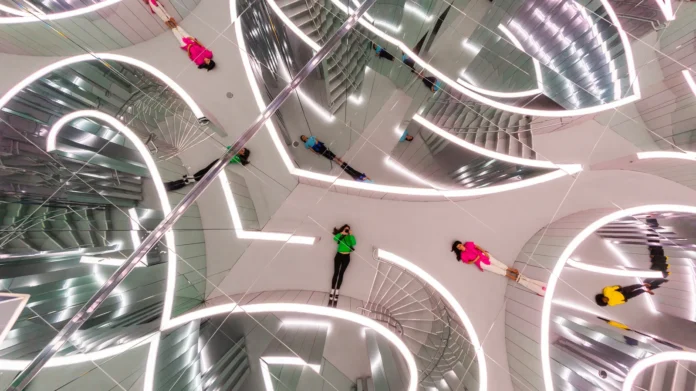In 2020, the Serpentine Galleries, in London, released a report titled “Future Art Ecosystems.” It surveyed emerging practices among artists who work with “advanced technologies”: everything from gene-editing to blockchains. The report, which was co-produced by a consultancy and framed as a strategic document, identified the trend of tech companies acting as art patrons, and advanced the idea of the “art stack”—a vertically integrated, artist-led system of production that operates at “unprecedented scale,” bypassing the art establishment through centralization. In software engineering, a “tech stack” usually refers to a system’s foundational software components, and a “full-stack” engineer is fluent in both front-end and back-end development. A full-stack art studio would own the process from beginning to end, employing both artistic and technology teams and controlling its own revenue streams and gallery spaces. Like movie studios, record labels, fashion houses, and video-game companies, studios that mastered the art stack could someday adopt an “industrialized” model, the report suggested; to monetize their offerings, they could broker corporate sponsorships, partner with real-estate developers, offer nonartistic technical services, or operate “like circuses and theme parks,” going direct-to-consumer with mass-market, ticketed experiences. There could be art-stack I.P.O.s.
The new immersive art also reflects the rise of consumer digital technologies, and the behaviors and expectations that they cultivate. In “Contemporary Art and the Digitization of Everyday Life,” published in 2020, Janet Kraynak, an art historian and professor at Columbia University, argues that the museum, “rather than being replaced by the internet, increasingly is being reconfigured after it.” Museums now treat visitors as if they are the “users” of a consumer product, and thus cater to their preferences, creating “pleasurable, nonconfrontational” environments, and emphasizing interactivity. She suggests that, instead of striving to be places of pedagogy, museums are growing “indistinguishable from any number of cultural sites and experiences, as all become vehicles for the delivery of ‘content.’ ” Kraynak told me that she thinks the user-friendliness of museums is making them less challenging and interesting. “That friendliness is kind of pernicious,” she said. “They’re not equipping the beholder to go outside of oneself, outside of one’s comfort zone.” In this fashion, she went on, museums have assumed a therapeutic function.
Analysis:
Immersive art is on the up-and-up. It is increasingly more popular as the average person has access to an immersive object on their person everyday, their phone. People got a glimpse of the power they could have over media and art and it is harder and harder to feel fulfilled now just looking at art. Everyone wants to be the artist. This especially applies to kids. Some of the first interactive and immersive exhibits in museums existed in the “kids areas”. Kids like what they like and hate what they hate. Their attention span is short and their opinion is strong. When designing for kids I believe it is important to accommodate some level of choice and play into the design.
Source:
Wiener, A. (2022, February 10). The rise of “Immersive” art. The New Yorker. Retrieved September 20, 2022, from https://www.newyorker.com/news/letter-from-silicon-valley/the-rise-and-rise-of-immersive-art




